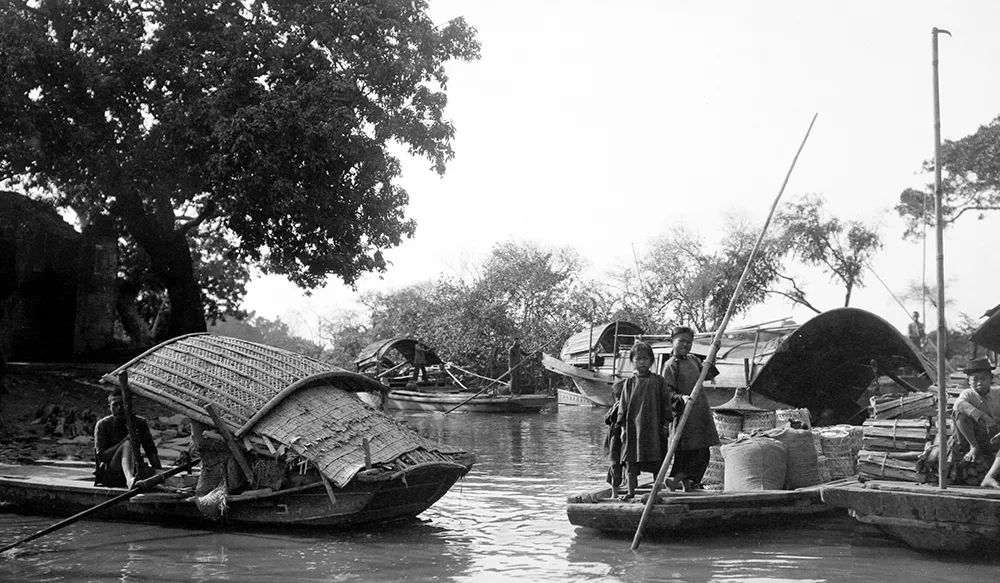
A creek in Canton, 1919-1920. Image courtesy of Swire, G. Warren Collection and Historical Photographs of China, University of Bristol (www.hpcbristol.net). 广州河涌上的疍民,摄于1919-1920。
Do you wonder how Cantonese people lived their life in the late Qing Dynasty and the Republic of China era? Let's find out the answer through the historical photographs collected in the 'Historical Photographs of China' project of the University of Bristol, England.
今天,我们来到英国布里斯托大学“中国历史老照片”项目收藏照片的“生活习俗”篇。通过这些珍贵老照片,去了解清朝末年至民国时期广州的民生百态和风俗民情。


1. Tanka people 疍民


The "boat people", or Tanka people as they are locally known, are fisherfolk living on junks and boats in coastal parts of the Pearl River Delta. Since they lived by the water and skillfully sang folk songs, they were sometimes referred to as "Water Gypsies".
疍民,又叫“蛋民”“疍家人”“水上人”,曾是珠三角一带河网水道上以船为家的人群,由于居住地点不固定,随河而徙、四处漂泊且擅唱民歌,因此被称为“水上吉普赛人”。
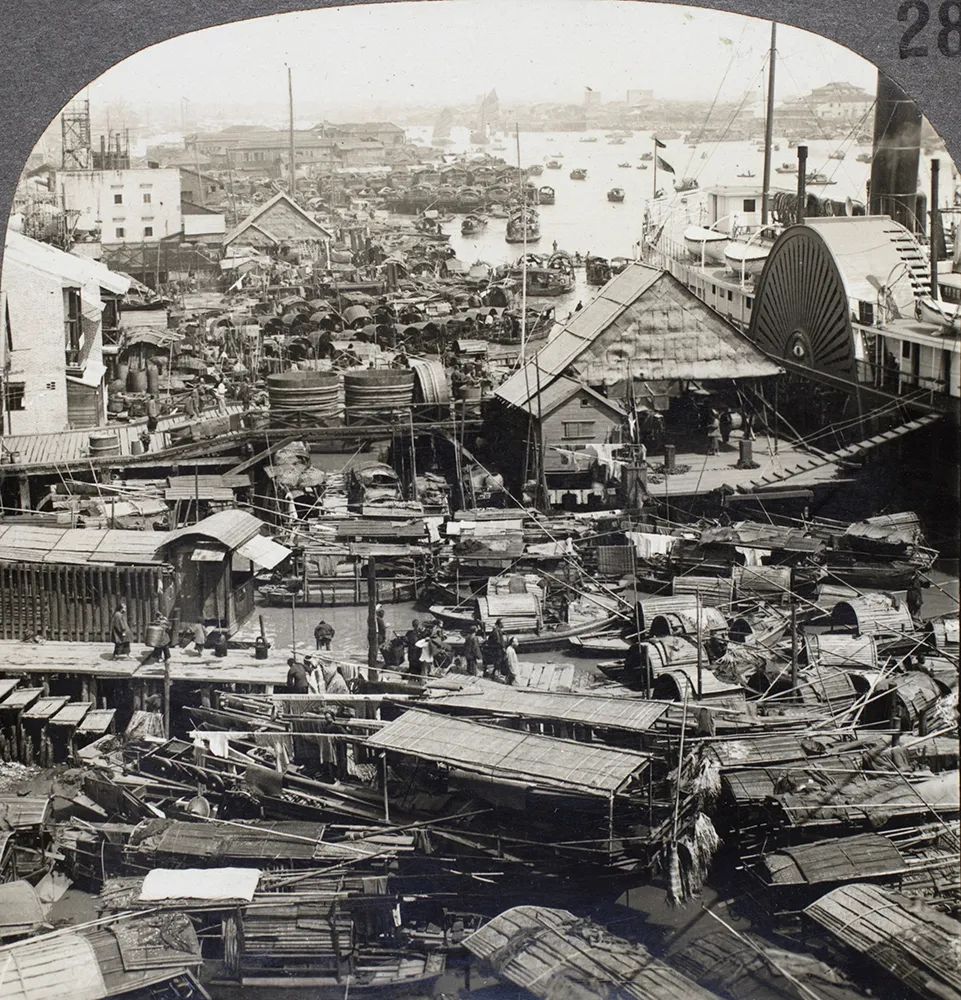
The Pearl River with jetties, sampans and a paddle steamer, Guangzhou, 1900. Image courtesy of Carstairs, Jamie Collection and Historical Photographs of China, University of Bristol (www.hpcbristol.net). 珠江上密密麻麻的疍家渔船,摄于1900年。
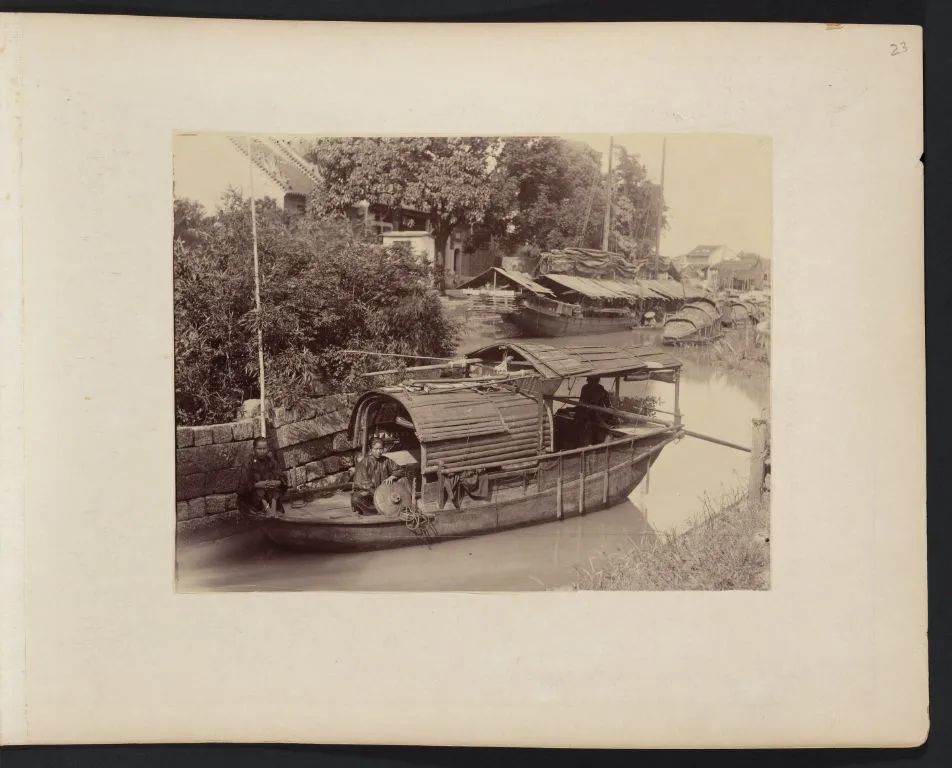
Sampans, Canton, 1893. Image courtesy of Edward Bangs Drew Collection and Historical Photographs of China, University of Bristol (www.hpcbristol.net). 广州河涌上的疍民女子,摄于1893年。


2. Flower Boats 花船


Flower Boats, or floating brothels, were not uncommon in Canton(Guangzhou) during the Qing Dynasty.
“花船”,一种水上的花街柳巷,到了夜晚灯火通眀,曲乐之声直至天明。乾隆年间,广州花船天下闻名。
The women on the boats lived in near slavery to their procurers, who could be merchants from the Thriteen Hongs or compradors who bribed officials to allow the trade. These boats could be hired and were largely patronized by foreign pleasure seekers.
船舶妓女是一种古老的社会民间现象,妓院以船为起居室,扮演妻子、女儿等角色来招待取悦客人。花船是广州十三行行商们时常光顾的场所,也是当时外商们的消遣地之一。
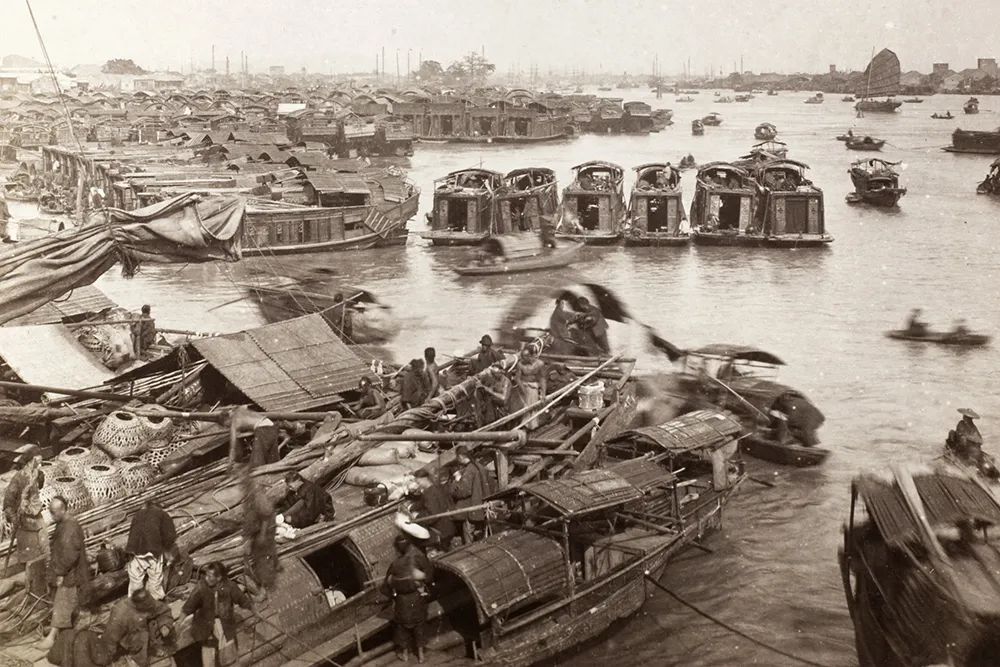
Boatmen and boats, Pearl River, Canton, 1880s. Image courtesy of Billie Love Historical Collection and Historical Photographs of China, University of Bristol (www.hpcbristol.net). 云集在广州珠江上的疍民,中间像房子一样的船即为“花船”,约摄于1880年代。


3. Dragon Boat Festival 端午节庆


The crisscross network of rivers contributed to the tradition of the dragon boat race during the Dragon Boat Festival (the 5th day of the 5th lunar month) in Guangdong.
广东河流纵横的地理特点,造就了广东人端午赛龙舟的传统。
In the pre-Qin period, Yue(越) people who lived in coastal areas of South China or the south of the Five Ridges (Lingnan) already knew how to build boats and developed the custom of dragon boat race under the influence of Chu Culture (Chu State rose in the mid-8th century BCE around the present province of Hubei, in the fertile valley of the Yangtze River in South China), one of the most important parts of the Chinese Culture. Now, the event has become one of the important traditional festival activities in Guangdong.
在先秦时期,越人已有制木成舟的技术,受楚国文化的影响,越人也逐渐形成端午赛龙舟的习惯,经过千百年的沉淀,成为广东人重要的节日传统活动之一。
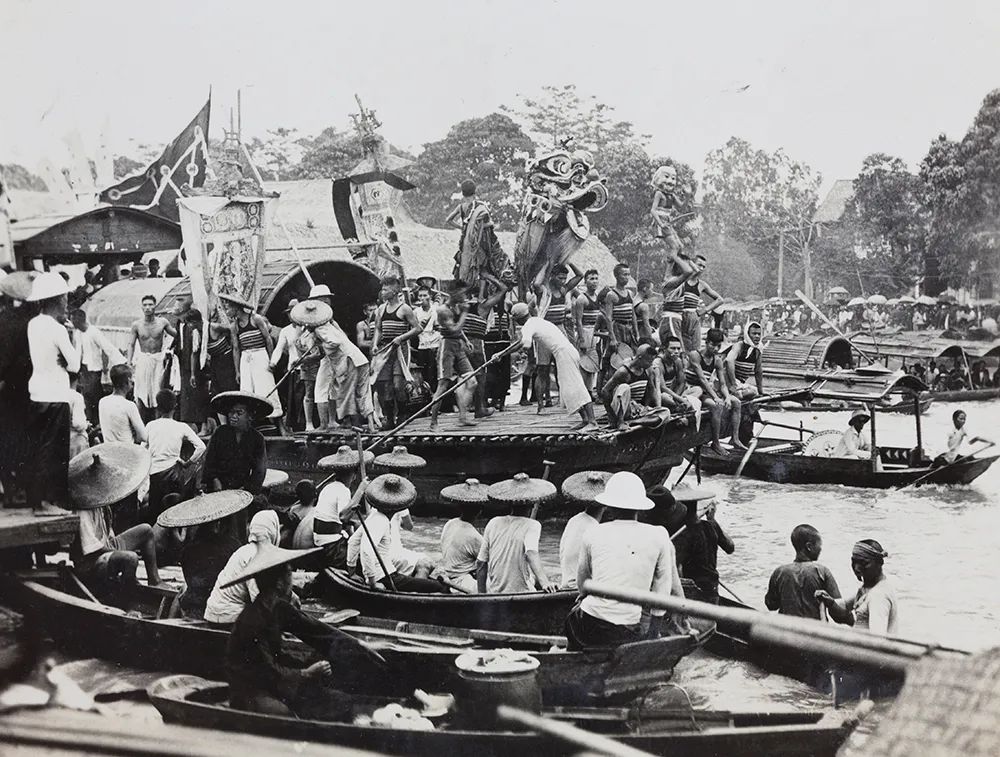
Lion Dance on board a boat, Dragon Boat Festival, Guangzhou, 1931. Image courtesy of Ross, Cyril Collection and Historical Photographs of China, University of Bristol (www.hpcbristol.net). 广州端午节舞狮,摄于1931年。


4. Buddhism 寺庙生活


Buddhism was first introduced to China from India roughly 2,000 years ago during the Han Dynasty. It enjoyed a significant boom in South China under Emperor Wu of Liang, who ruled from 502 to 549.
大约在两汉之际,佛教传入中国,南北朝时期在全国广泛传播,并出现了很多学派,至隋唐臻于鼎盛。而岭南地区的佛教传播既受到中原地区的影响,又因地处南海之滨,很早就感受到来自印度的“海潮音”。
Temples in Guangzhou, including Guangxiao Temple (光孝寺), Liurong Temple (六榕寺), Hualin Temple (华林寺) and Haitong Temple (海幢寺), witnessed Buddhism's spread, development and adaptation in China. When there was a Buddhist festival or event, a crowd of Buddhists would gather together to burn incense and worship the Buddha.
清朝时期,广州有四处佛教信众集聚的地方,每到与佛教相关的节日庆典,其间人声鼎沸,香火鼎盛。这四处佛光照耀的地方不是别处,正是广州人耳熟能详的广州佛教四大丛林:光孝寺、六榕寺、华林寺和海幢寺。
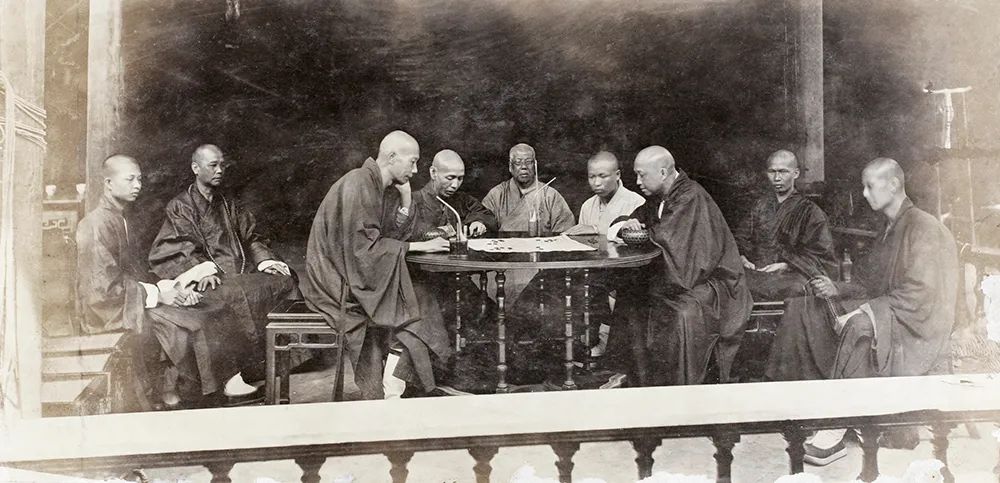
Buddhist monks playing Weiqi (the game of Go), Temple of the Five Hundred Gods(Hualin Temple), Guangzhou, 1870. Image courtesy of Bowra, Edward Collection and Historical Photographs of China, University of Bristol (www.hpcbristol.net). 广州华林寺,正在下围棋的和尚们,摄于1870年。 
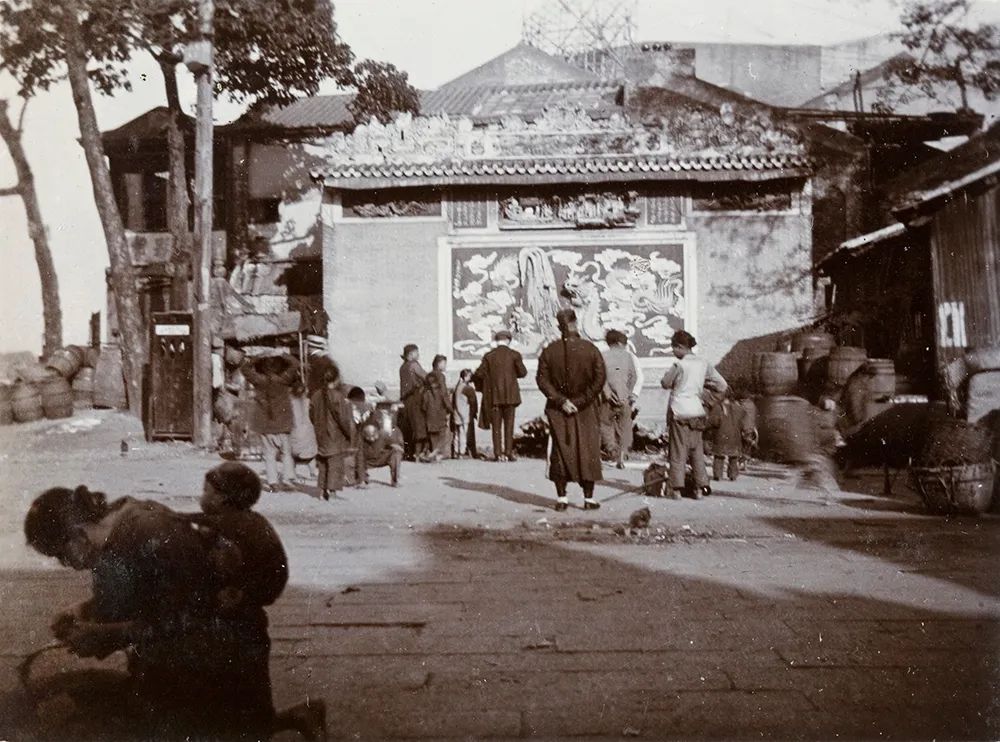
Outside a temple, Canton, 1910. Image courtesy of Rue, Henry Collection and Historical Photographs of China, University of Bristol (www.hpcbristol.net). 广州某寺庙外。
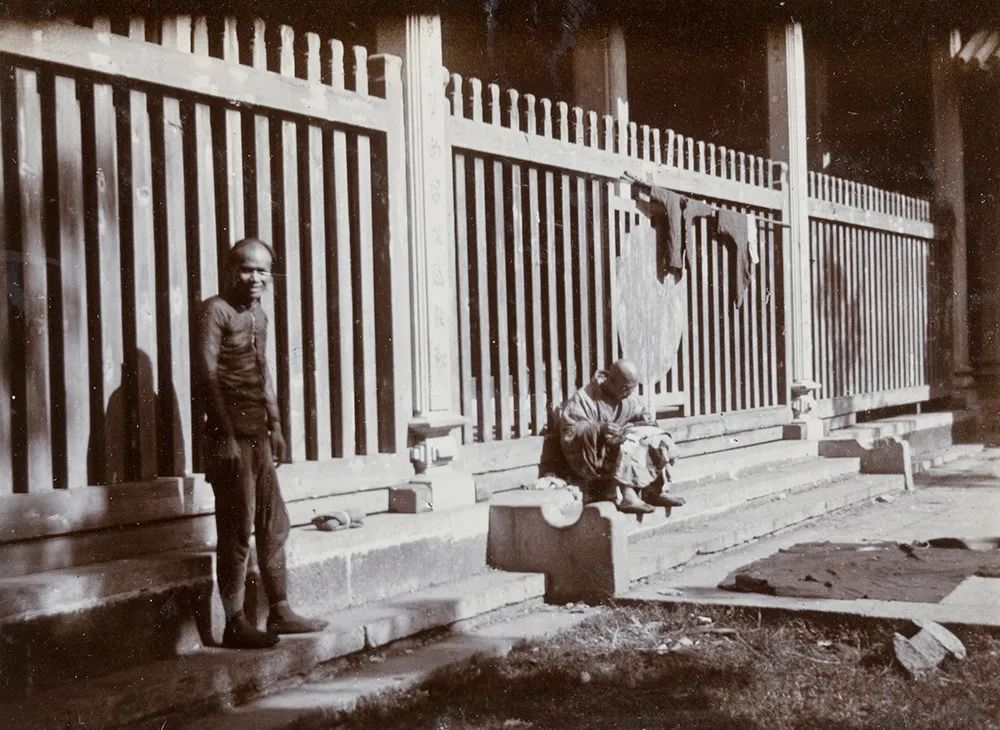
Buddhist priest mending clothing in temple courtyard, Canton, 1910. Image courtesy of Rue, Henry Collection and Historical Photographs of China, University of Bristol (www.hpcbristol.net). 广州某寺庙内,一和尚正在缝补衣服,旁边则站着一位穿着简陋的男子,摄于1910年。


5. Church 教会


After the Second Opium War, Guangzhou became a treaty port city and a window for the convergence of East and West. A large number of churches, missionary hospitals and schools sprang up in Guangzhou. Starting with evangelism, a series of speeches took place in churches, hospitals, streets, docks and many other public places, bringing a marked impact on the development of the city.
经历了两次鸦片战争后,广州很快成为一个条约开埠城市和东西文化汇流的窗口,一大批教堂、教会医院、教会学校也相继在广州出现。由传福音开始,一系列演讲会在教堂、医院、街头、码头以及众多公共场所进行着。在半个多世纪的时间里,对广州的城市文化潜移默化,其作用不可低估。
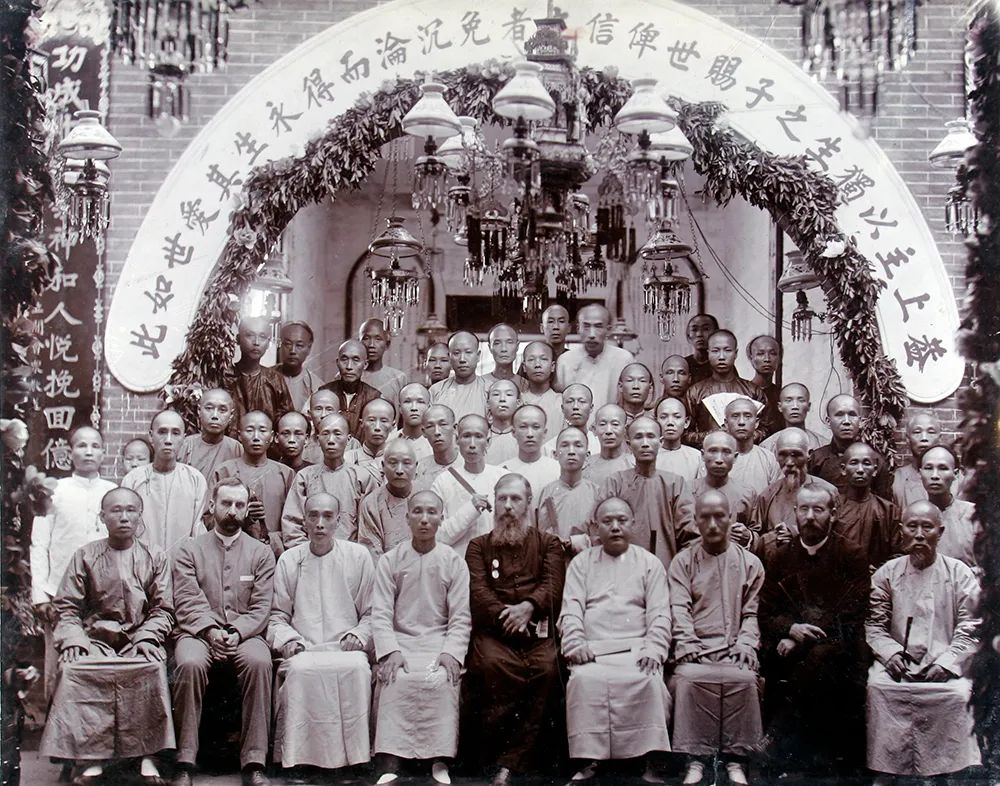
Opening of Church at Tai Leung(大良), Canton Province, Bishop Banister sitting in the centre, 1890-1910. Image courtesy of Banister Family Collection and Historical Photographs of China, University of Bristol (www.hpcbristol.net). 广东大良教堂启用典礼,端坐于中间的为英国威廉·班尼斯特神父,摄于1890-1910年间。


6. Western weddings 西式婚礼


Western weddings first appeared in China at the end of 19th century. By 1905, they had become more and more popular among those who advocated freedom of marriage in big cities like Shanghai and Guangzhou.
西式婚礼在中国最早出现的时候是19世纪末,到1905年,由于其行事特别适合主张婚姻自主人士的口味,一时间实行的人越来越多,在一些大城市变成了一种时尚。
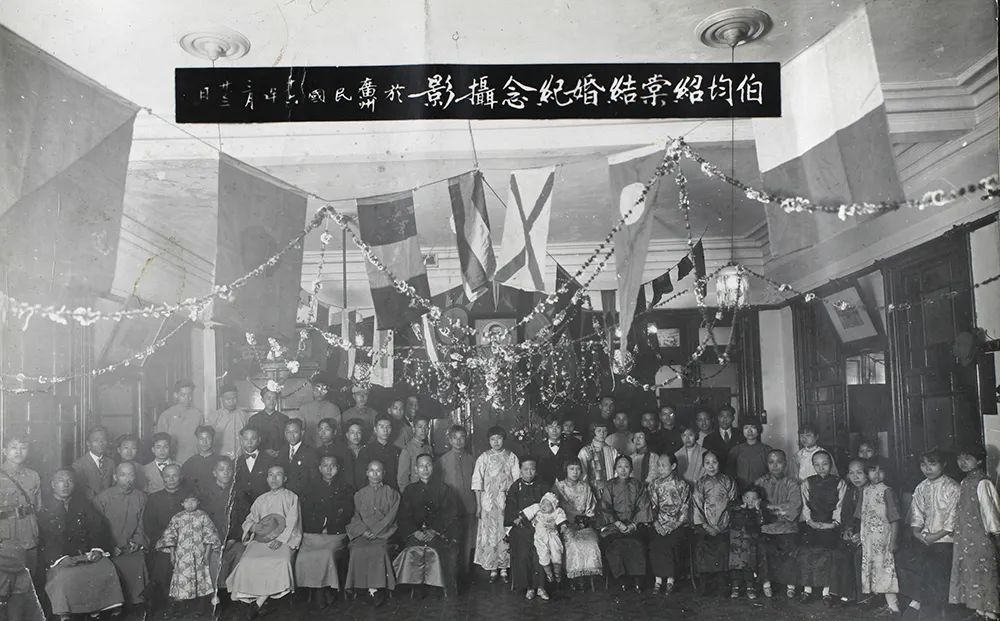
A wedding in Canton, 1920. Image courtesy of Hedgeland, Reginald Collection and Historical Photographs of China, University of Bristol (www.hpcbristol.net). 广州婚礼合影留念,可见当时西式婚礼已经在广州流行,摄于1920年。


7. Funeral customs 丧葬习俗


During the Qing Dynasty and the Republic of China era, Guangzhou had its unique funeral customs. The dead would be temporarily placed in zhuangfang (similar to present-day mortuary house) before being buried.
在清朝、民国时期,广州有着独特的“墓葬方式”——庄房。这里的“庄房”实际为“死人旅社”——暂存死人尸体的地方,也叫“停柩”。
Back then, some abandoned nunneries and temples were often used as zhuangfang, including Shuangshan Temple built in the Qing Emperor Kangxi’s reign outside the North Gate of Guangzhou city (near present-day Jiefangbei Lu, Yuexiu district).
当时,一些被废弃的庵院寺庙,常常被当做庄房使用。清朝康熙四十九年在广州大北门外(现解放北路南越王墓博物馆一带)建立的双山寺就是其中的庄房代表。
除了双山寺外,广州在清朝、民国时期还有很多寺庙尼庵也用来停尸,比如弥勒寺、翠环庵等,一时之间蔚为奇观。
The proper conducts in the burial ceremony have always been a matter of great importance to the Chinese. The custom of burying people alive with dead bodies lasted a long time in ancient China, before being replaced by the burial of pottery figures. In modern times, human figures made of paper were burnt as an offering to the dead.
在中国古代,人们相信人死以后,灵魂会生活在另一个世界里,墓葬则是墓主在另一个世界的居所,所以一切按照“事死如事生,事亡如事存”的礼制办事。因此,在中国古代有以人殉葬的习俗,后逐渐以陶俑代之,到近代则以纸扎人像伴葬。
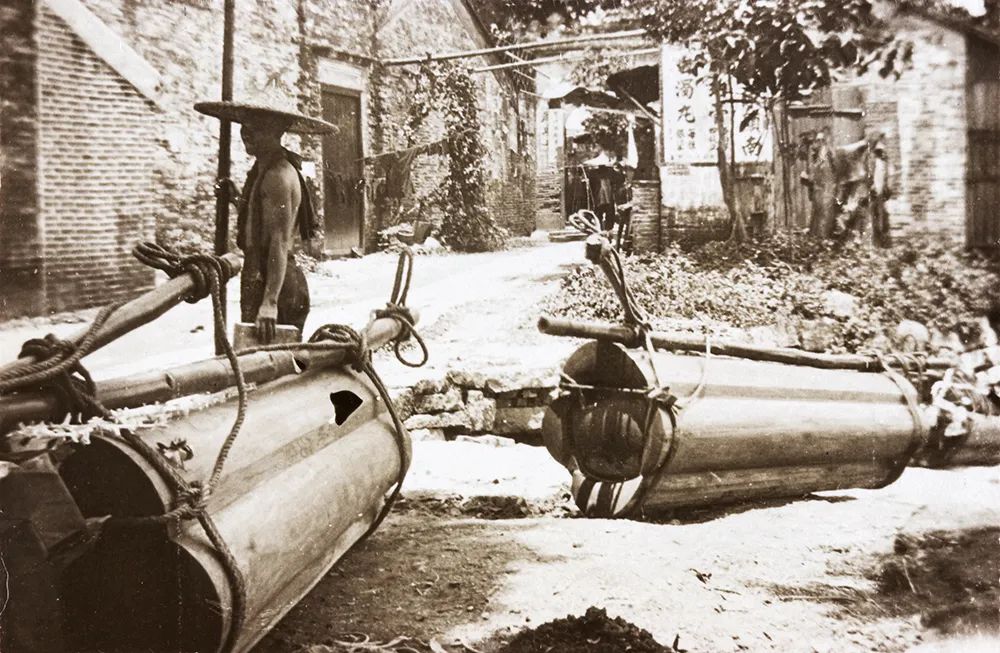
Coffins and bearers at the 'City of the Dead', Canton (广州), 1905. Image courtesy of Billie Love Historical Collection and Historical Photographs of China, University of Bristol (www.hpcbristol.net). 广州,棺材和抬棺人,摄于1905年。图中地点应为现烈士陵园附近的“永胜寺”,也是专门做“庄房”生意的一个寺庙。
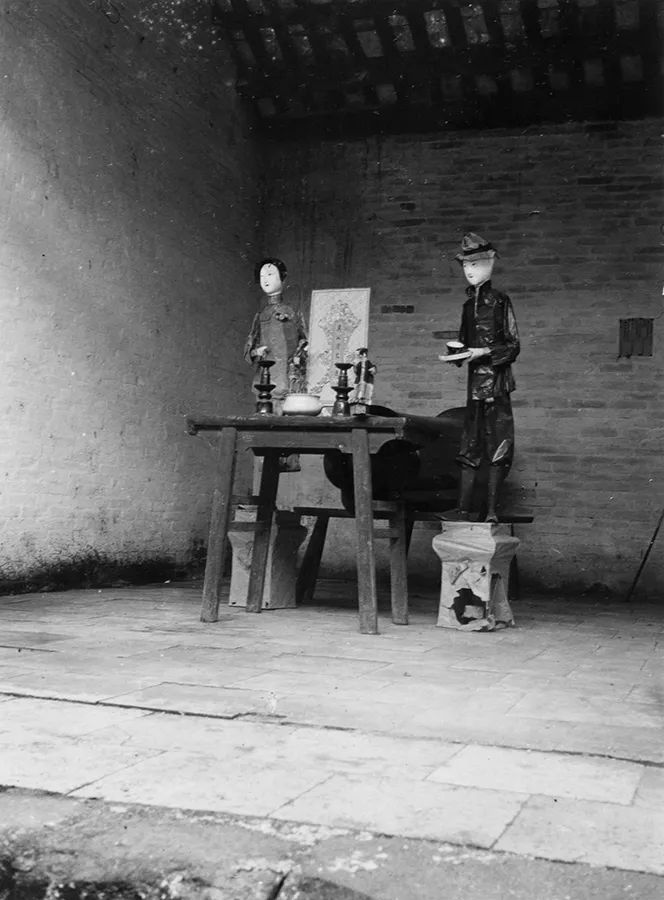
Coffin with spirit servants, City of the Dead, Canton, 1921-1923. Image courtesy of Davidson, Francis Collection and Historical Photographs of China, University of Bristol (www.hpcbristol.net). 广州丧葬上的纸仆人,摄于1921-1923年间。
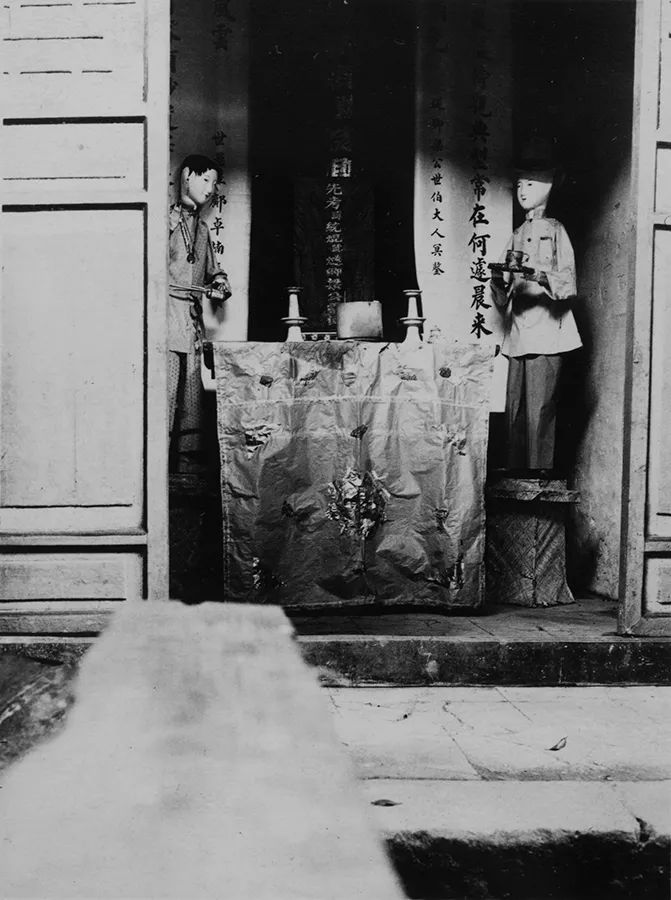
Spirit servants and offerings, City of the Dead, Canton, 1921-1923. Image courtesy of Davidson, Francis Collection and Historical Photographs of China, University of Bristol (www.hpcbristol.net).  广州丧葬上的纸仆人和祭品,摄于1921-1923年间。
广州丧葬上的纸仆人和祭品,摄于1921-1923年间。
Author: Yuan
Supervisor: Lv Yun
Editor: Lv Yun
Source: GZ-Maritimesilkroad (丝路云帆Silu Yunfan), official Wechat account of City Alliance for the Preservation and world Heritage Inscription of Maritime Silk Road Heritage
Courtesy: Historical Photographs of China, University of Bristol (www.hpcbristol.net), Guangzhou Municipal Bureau of Culture, Radio, Film and Tourism